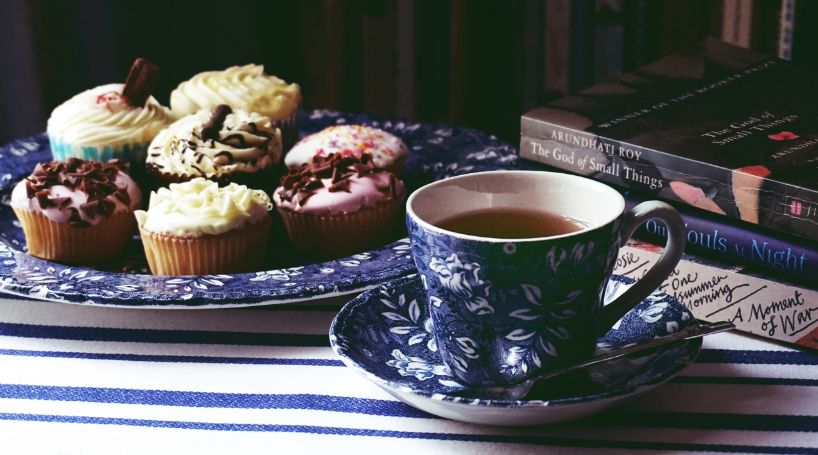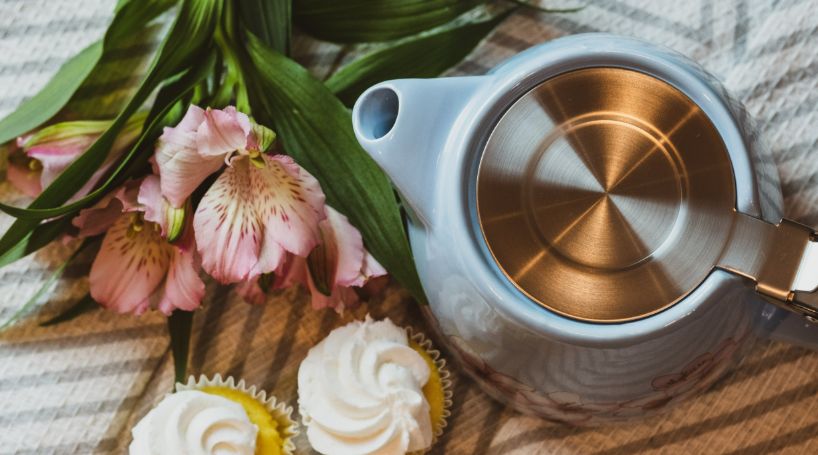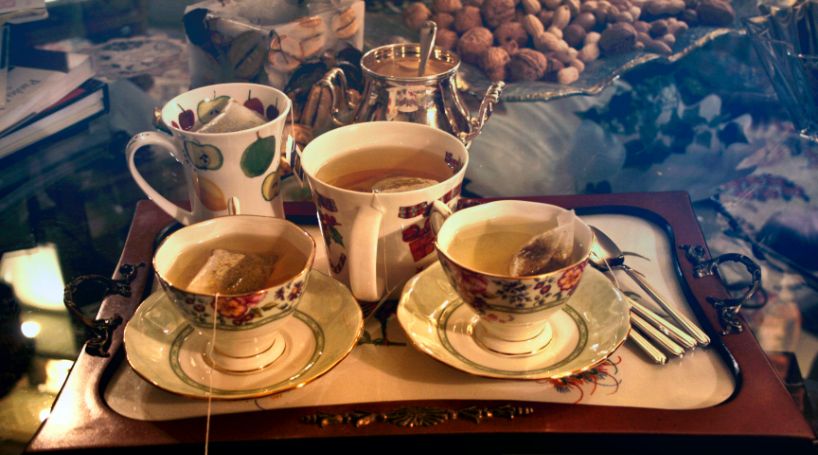
Afternoon tea is something that is enjoyed the world over.
So much so that pubs and restaurants now start to offer afternoon tea as a way to entice more customers as they know how popular it is.
Ever since leaf tea was first enjoyed as a beverage it has paved the way for tea-related events.
But how did afternoon tea get so popular?
In this blog post, we will discover the history of afternoon tea and what is typically served on such an occasion.
Let’s get into it.
The History of Afternoon Tea

The history of afternoon tea can be traced back to 19th-century England.
It’s widely believed that credit for popularising afternoon tea goes to Anna, the Duchess of Bedford.
In the early 1840s, she began experiencing hunger pangs between lunch and dinner and started to enjoy a light meal of tea, bread, butter and cake to tide her over.
This practice quickly caught on among the aristocratic circles of London and soon evolved into a fashionable social event.
By the 1860s, afternoon tea had become a staple of upper-class society, featuring an assortment of sandwiches, scones, cakes, and, of course, a variety of fine teas.
The custom extended beyond the elite classes, and tea rooms and tea gardens sprouted up across the country.
Today, afternoon tea remains a cherished tradition not only in the United Kingdom but also in various parts of the world.
What is a typical afternoon tea menu?

A typical afternoon tea menu is a delightful assortment of savoury and sweet treats, served alongside a selection of fine teas.
The menu usually begins with finger sandwiches, which often include classics such as cucumber and cream cheese, smoked salmon with dill, egg and cress and ham with mustard.
These are usually served with the crusts removed and cut into small, bite-sized slices. Following the savoury portion, the focus shifts to the sweet treats.
These include scones, served warm with clotted cream and jam which are accompanied by a variety of delicate pastries and cakes.
Popular sweet options include Victoria sponge cake, lemon drizzle cake, macarons, éclairs and fruit tarts.
Why not try for yourself with our OH ME OH MY afternoon tea.
What is the difference between afternoon tea and high tea?

Afternoon tea and high tea are two distinct British traditions with differences in their origin, timing and menu.
High tea originated in working-class communities during the industrial revolution. High tea was served later in the day, around 5 or 6 PM, and was a more substantial meal to satisfy hunger after a day of labour.
It included more wholesome dishes like meat pies, fish, cold cuts, vegetables and baked goods like bread and butter.
The term “high tea” does not denote a more formal or luxurious affair; instead, it refers to the fact that this meal was typically served at a higher table, such as the dinner table.
What Teas are Served at Afternoon Tea?

At afternoon tea, a variety of teas are traditionally served to cater to different tastes and preferences. Here are some of the most commonly used teas:
Earl Grey
This classic black tea infused with bergamot oil offers a distinctive and refreshing flavour, making it a popular choice for afternoon tea. Its citrusy notes complement both savoury and sweet treats.
Darjeeling
Referred to as the “Champagne of teas,” Darjeeling is a light and delicate black tea from the Darjeeling region of India. It has floral and muscatel notes, making it an ideal match for scones and pastries.
Green Tea
For those who prefer a lighter and more refreshing option, green tea is a great choice. Its vegetal and slightly grassy flavours harmonise well with the afternoon tea menu, especially when served with delicate cakes and fruit-based pastries.
Oolong Tea
With its partially oxidised leaves, oolong tea falls between black and green tea. It offers a diverse range of flavours, from floral and fruity to toasty and earthy, making it a versatile option that can complement various tea-time treats.
Herbal Infusions
For decaf, loose-leaf tea alternatives, herbal teas or tisanes are a wonderful option. Chamomile, peppermint, rooibos, and fruit-infused blends provide a soothing and flavorful way to unwind during afternoon tea.
Choose Leaf Tea for Your Afternoon Tea
And there you have it, a complete overview of afternoon tea and most importantly, what tea goes with it.
If you would like to explore more loose-leaf tea options, browse our extensive range of teas available on our website.
We’re passionate about tea and we source only the finest loose-leaf tea for you to enjoy on any occasion.
Contact us today to find out more.





